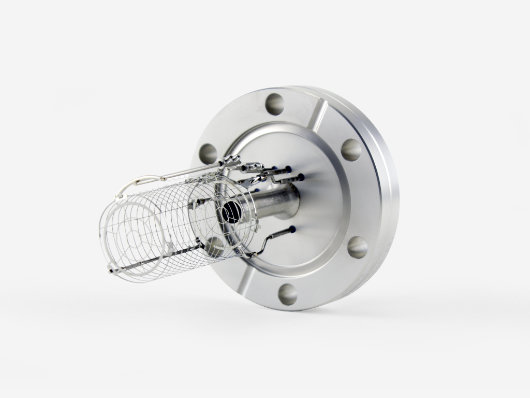What filament material should I use with my ion gauge?
Posted on Monday 21st August 2023 at 11:30
This blog post will discuss the key factors to consider when choosing the filament material type for your ion gauge. Filament type selection is a complex subject largely dependent on the vacuum environment they will be used in. AML offers three filament material types, these are Tungsten (FIL17), Thoria-coated Iridium (FIL18) and Yttria-coated Iridium (FIL19). These are available to purchase fitted to an ion gauge or as replacement filament assemblies. Let's start by discussing the most common filament material: Tungsten.

Ultra High Vacuum Ion Gauges aig1xg
Nude Bayard-Alpert ion gauges covering the vacuum range 1 x 10-3 to 3 x 10-11 mBar. They are intended for electron-bombardment degas. Available with a range of filament materials.

Ion Gauge Filaments fil1x
Replacement dual filament assemblies for AML ion gauges. Thoria or Yttria coated Iridium and Tungsten.
Tungsten Filaments (FIL17):
These are widely used because they are relatively inexpensive. They operate hotter than other types so will evaporate contamination from the filament surface. This results in a more stable gauge operation. However, this advantage may increase outgassing from surrounding surfaces due to elevated temperatures. Tungsten is not affected by hydrocarbons and halogens so is the filament to use if these are present. Tungsten filaments are very fragile and when hot will not survive exposure to air or mechanical mishandling.
Thoria-coated Iridium Filaments (FIL18):
These operate at a relatively cool temperature (1400°C) resulting in reduced outgassing and chemical reactivity with other gasses. They are considered the filament of choice when operating in the ultra-high vacuum region. Iridium does not burn out if exposed for a short time to high pressures while hot and so can survive a sudden loss of vacuum without damage.
Yttria-coated Iridium Filaments (FIL19):
Exposure to the alpha particles emitted by Thorium is of concern to some users. Yttria-coated filaments share very similar thermionic characteristics and behave the same as thoria-coated filaments but without the particle emission.
If you have any questions about filament type selection for your application, please contact us at sales@arunmicro.com.